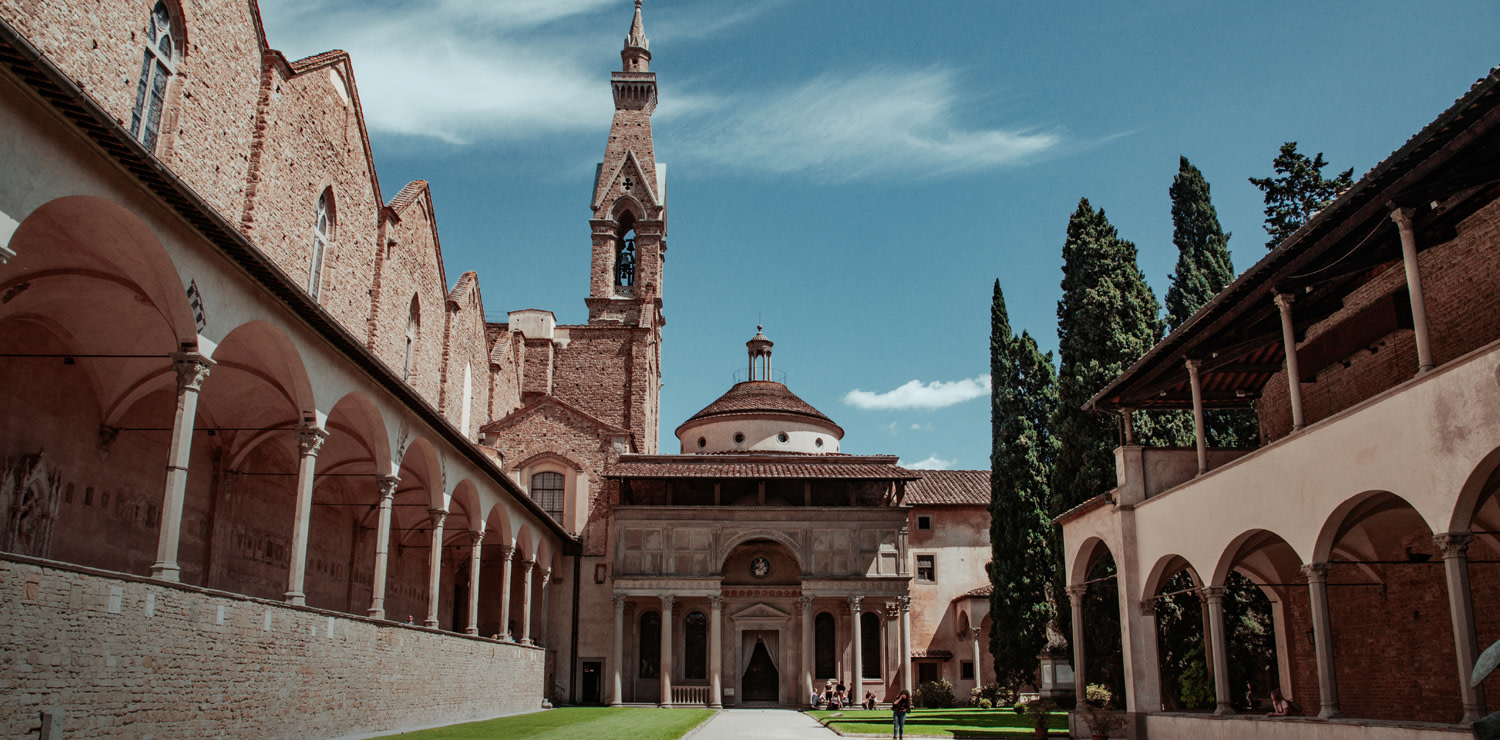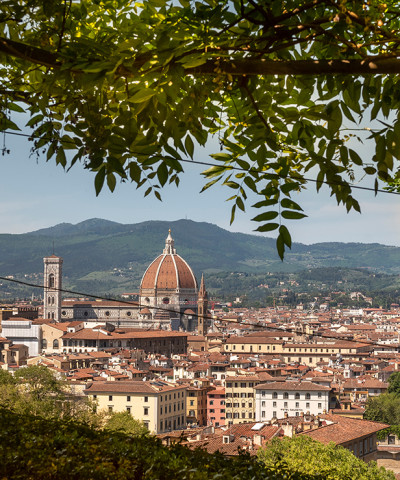The most beautiful and spectacular cloisters in Florence
Places charged with silence and great little-known stories, to visit year-round
Some are little more than courtyards, others boast prestigious frescoes, some large, some tiny. Here every noise is swallowed up and cancelled. They were created with the monasteries and developed by mendicant orders around the 1200s. They were where the dormitories, refectories and chapter houses opened onto. Few of them are known, but there are around sixty in the city alone. Here are a few
SAN MARCO
The large Dominican complex is now a museum. It is the only one that boasts all the cells frescoed by Beato Angelico and frescoes in the cloisters depicting stories of Sant’Antonino, archbishop of Florence at the time of Cosimo the Elder, by Bernardino Poccetti, Antonio Sogliani and others. A feast of Dominicans and a Last Supper by Ghirlandaio adorn the Fra Bartolomeo and Fra Angelico rooms.
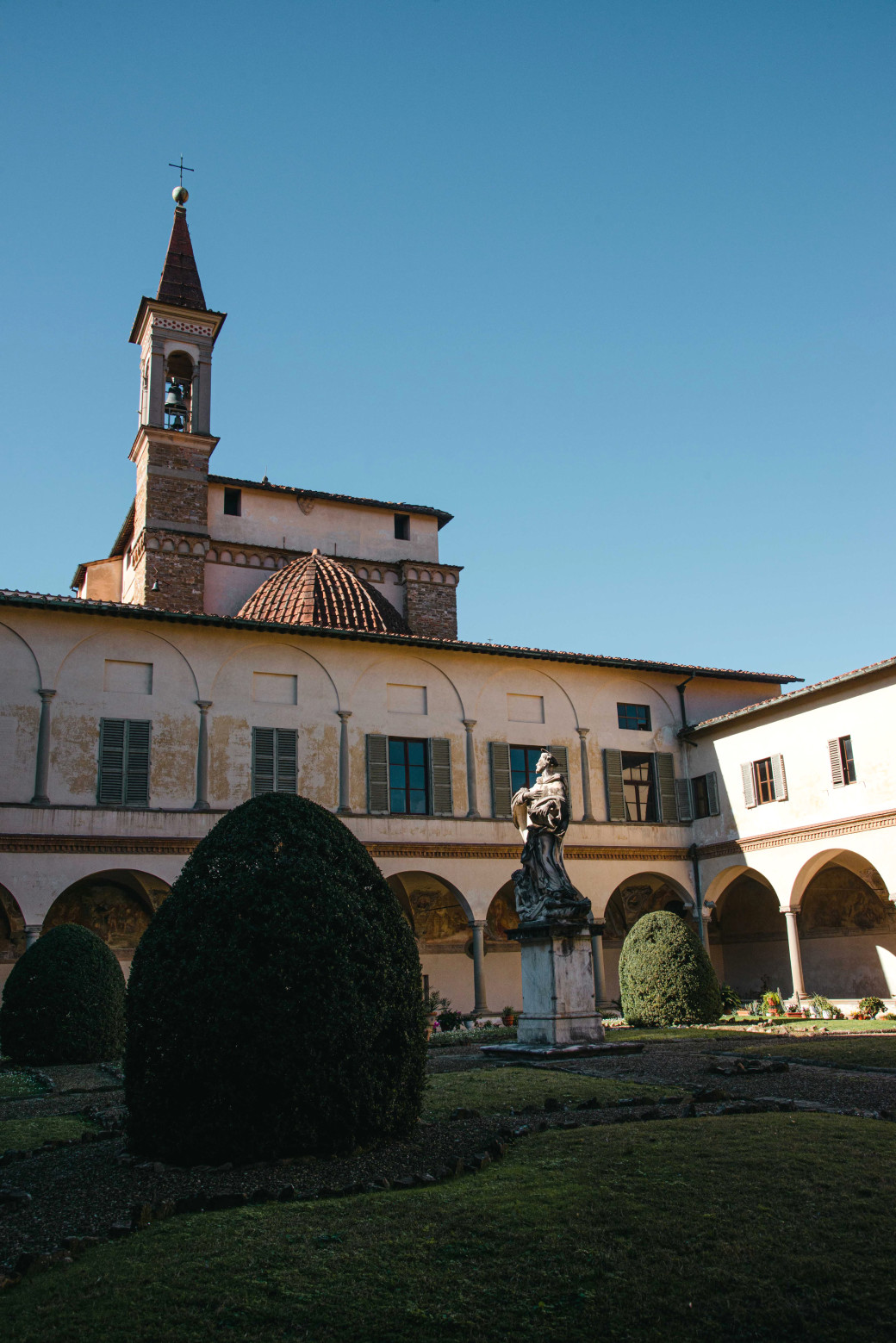 The cloister of San Marco
The cloister of San MarcoLO SCALZO
Today only the small, precious cloister frescoed between 1509 and 1526 by Andrea del Sarto and Franciabigio remains. The Confraternity of the Scalzo was dedicated to St. John the Baptist and was so called because the brother who carried the Cross in processions was barefoot. The cloister in via Cavour with elegant matching columns and lowered arches is entirely frescoed in monochrome with stories of the Baptist.
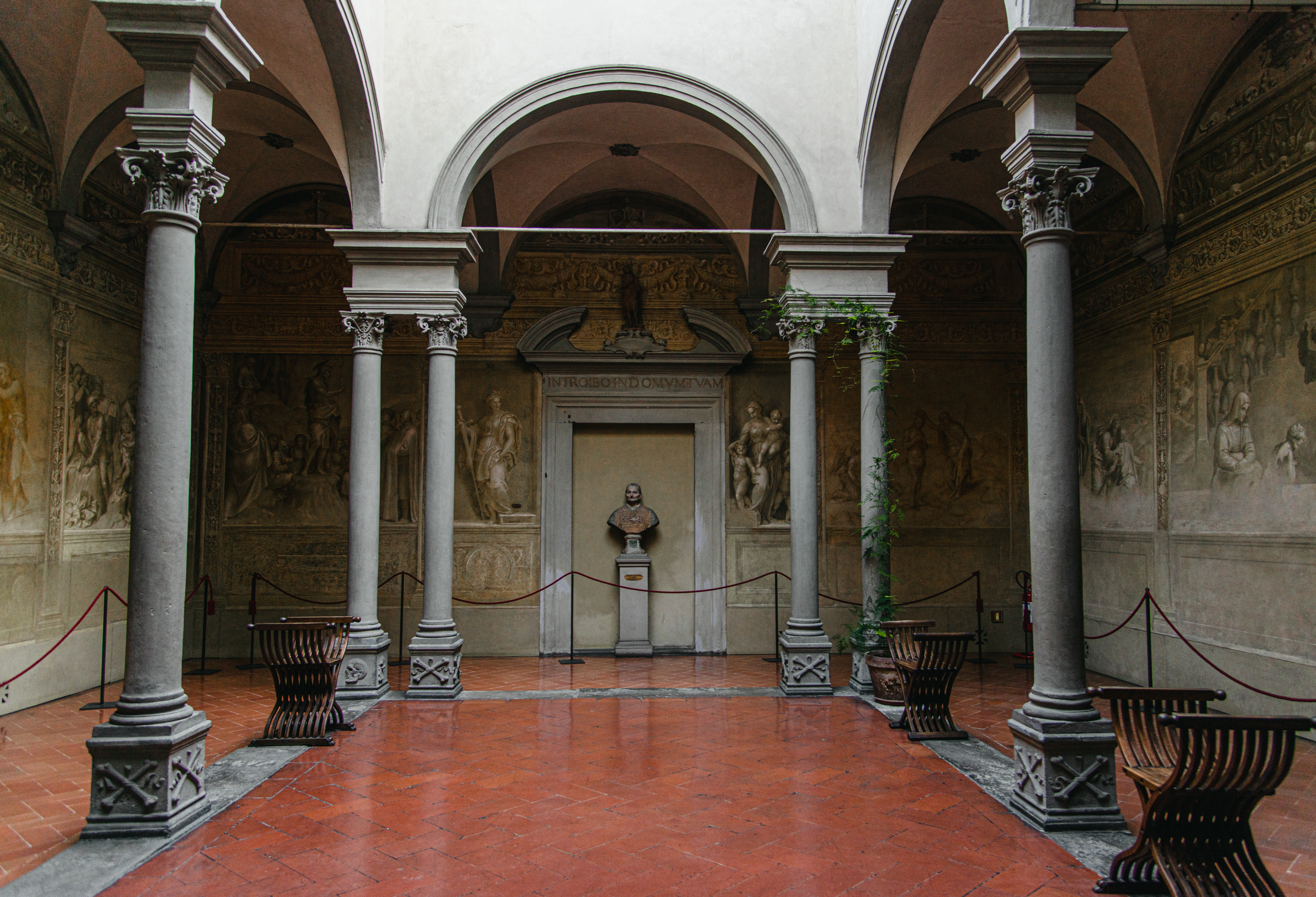 The cloister of the Scalzo
The cloister of the Scalzo CHIOSTRO DEI VOTI
All the evolution of Mannerist art at a glance. It is the Chiostrino dei Voti of the Santissima Annunziata, so called because it was customary to display votive offerings on the Feast of the Annunciation. In the twelve frescoes, in addition to the Stories of the Servites by Matteo Rosselli and the Adoration of the Shepherds by Alesso Baldovinetti, we find those by Andrea del Sarto, Franciabigio, Pontormo and Rosso Fiorentino. Frescoes that crowned Pope Leo X’s decision to transform the basilica into a Sanctuary. Del Sarto painted the Birth of the Virgin, Franciabigio the Marriage, while his pupils Pontormo and Rosso make their debut with the Visitation and the Assumption.
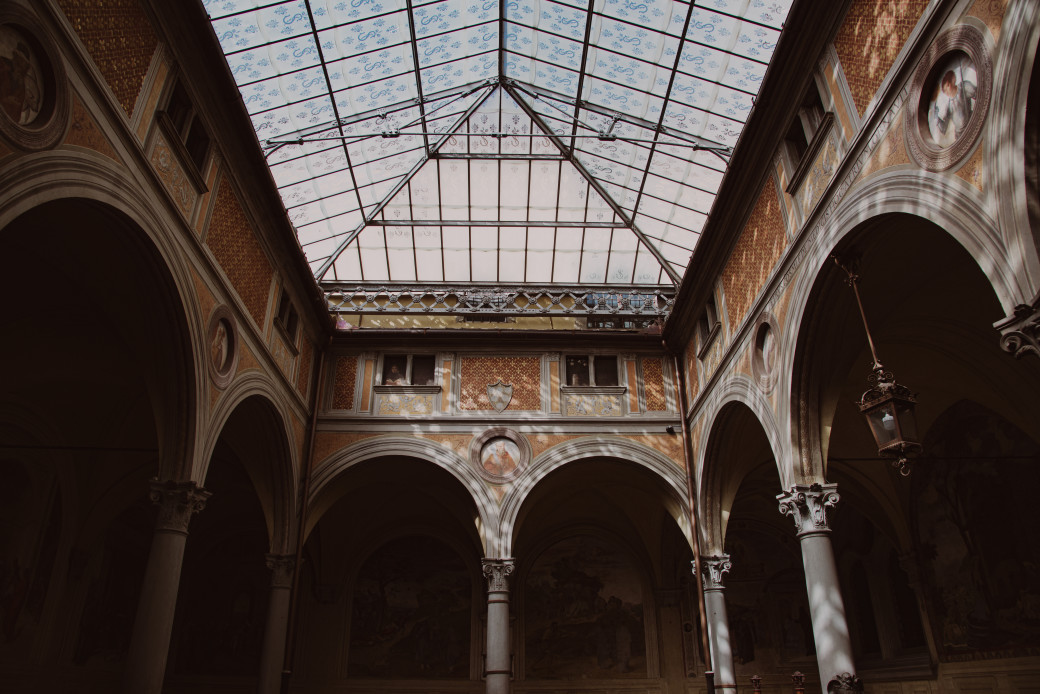 The Chiostrino dei Voti
The Chiostrino dei VotiSANTA MARIA DEGLI ANGELI
Only a little remains of the great Camaldolese complex which was the meeting place for philosophers and humanists, followers of the Greek scholar and theologian Ambrogio Traversari and miniaturist Lorenzo Monaco. In fact, the large cloister, Brunelleschi’s rotunda and most of the structures have been incorporated by the University’s Faculty of Letters and Philosophy. However, today it is possible to visit the second of Gherardo Silvani’s cloisters, with the stories of San Romualdo painted by Bernardino Poccetti and his pupils, by reservation (anmigfi.visite@gmail.com), the Association of War Wounded and Disabled.
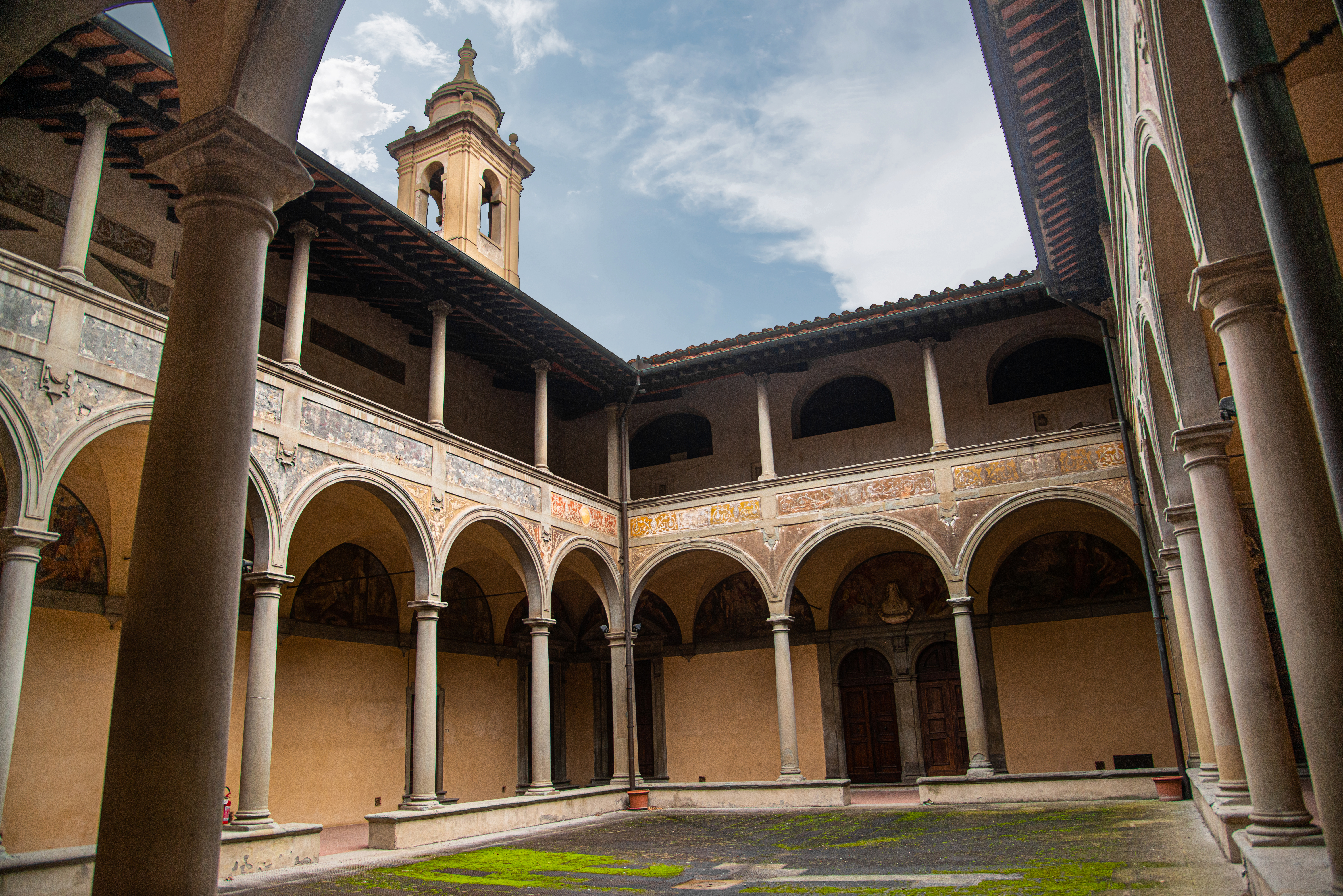 The cloister of Santa Maria degli Angeli
The cloister of Santa Maria degli AngeliSAN MINIATO
A privilege reserved for those visiting the monastery of San Miniato. The cloister features a series of frescoes by Paolo Uccello with figures inserted in strongly perspective spaces, unfortunately hardly legible today. On the other hand, there is a beautiful and rare fresco by Bernardo Buontalenti: Christ on the Road to Emmaus.
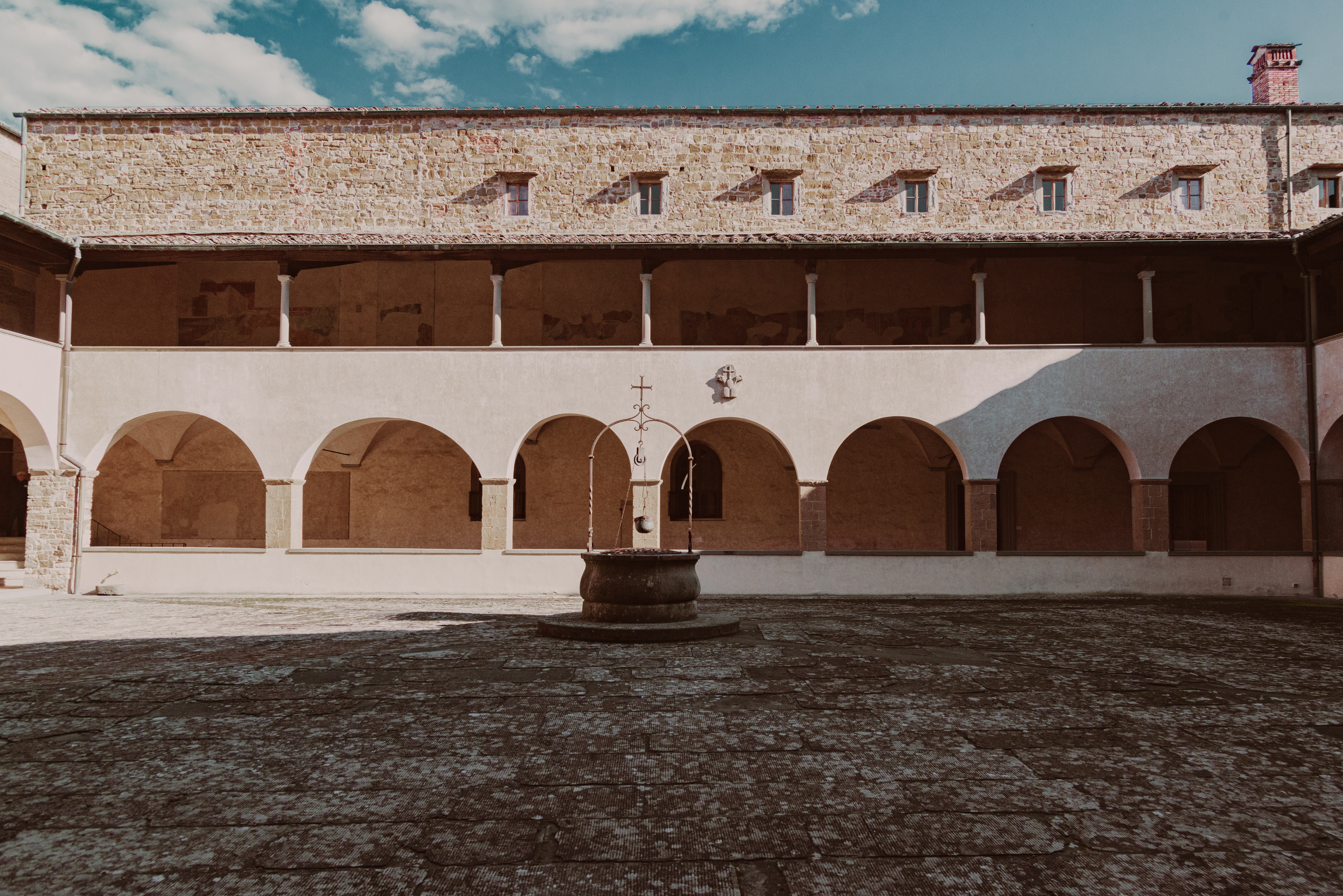 The cloister of the Basilica of San Miniato
The cloister of the Basilica of San MiniatoSANTA MARIA NOVELLA
Once again it is Paolo Uccello who dominates the cloister of Florence’s first Dominican church. His Genesis cycle and particularly The Flood, which depicts not one, but two Arcs, are truly evocative. The cloister with the stories of San Domenico and the fight against the heretics frescoed by Bernardino Poccetti, Santi di Tito, Ludovico Cigoli and Alessandro Allori is also the largest in Florence.
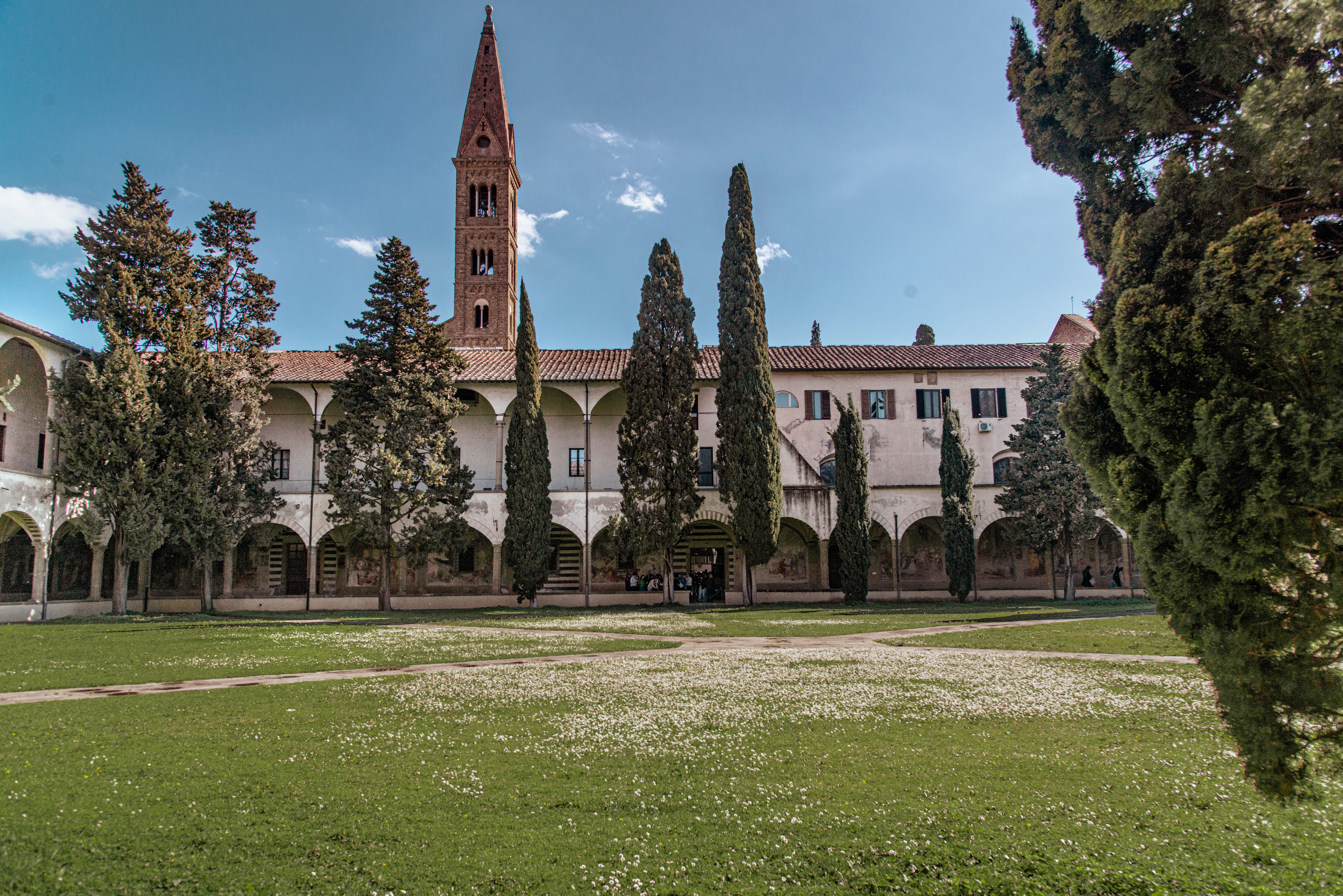 The Chiostro Grande (main cloister) of Santa Maria Novella
The Chiostro Grande (main cloister) of Santa Maria NovellaSAN LORENZO
It is the only church where the cloisters did not belong to a convent, but to the Canons, clerics who lived together in a clergy house. It was the Medici family’s church and the cloister, perhaps by Michelozzo built to a design by Brunelleschi, features a harmonious two-storey loggia. It is overlooked by Michelangelo’s Laurentian Library, and leads to the church and the crypt where Donatello and Cosimo de’ Medici have their resting place. The medieval cloister can also be visited.
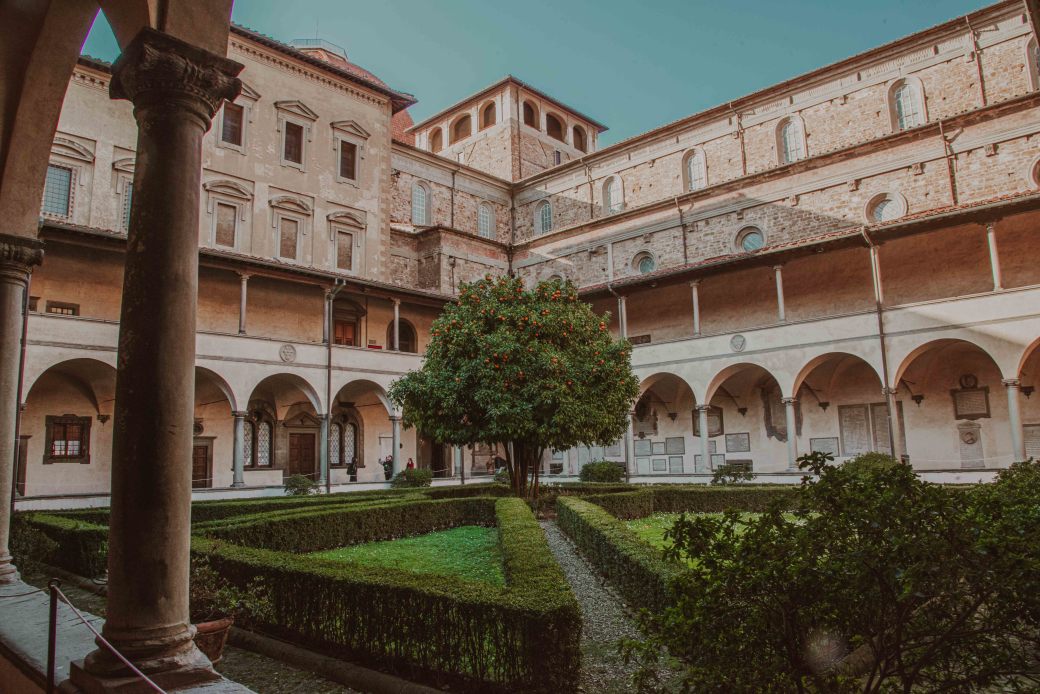 Chiostro di San Lorenzo
Chiostro di San LorenzoSANTA CROCE
It is the cloister in which the first Last Supper painted in the history of art is kept. It was Taddeo Gaddi, a pupil of Giotto who started the successful series. But the cloisters of Santa Croce are also among the best preserved and where the Chapter House, the Pazzi Chapel by Brunelleschi is a hymn to harmony, as is the cloister, perhaps done at a young age.
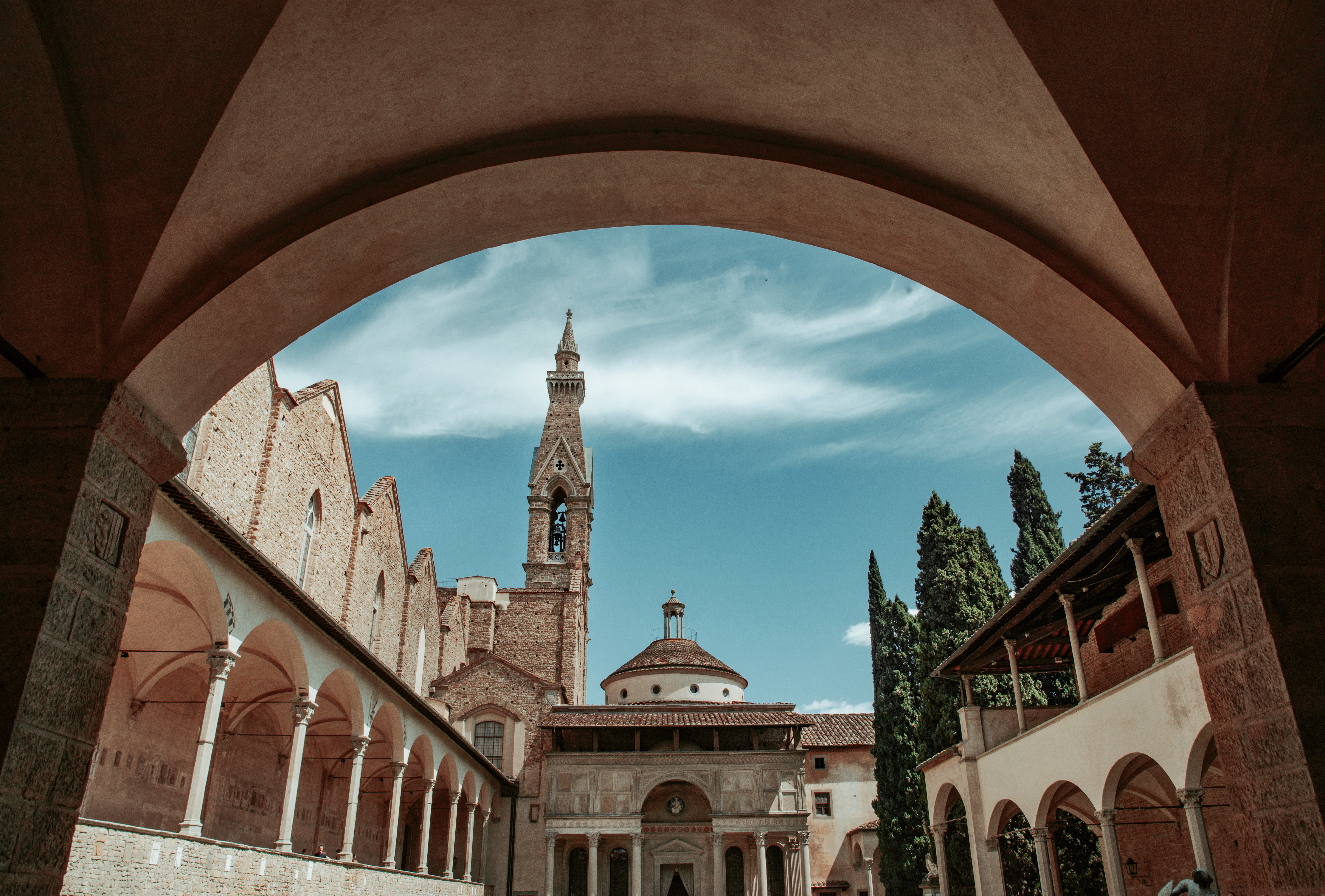 The Chiostro Grand, the main cloister of the Basilica of Santa Croce
The Chiostro Grand, the main cloister of the Basilica of Santa Croce





